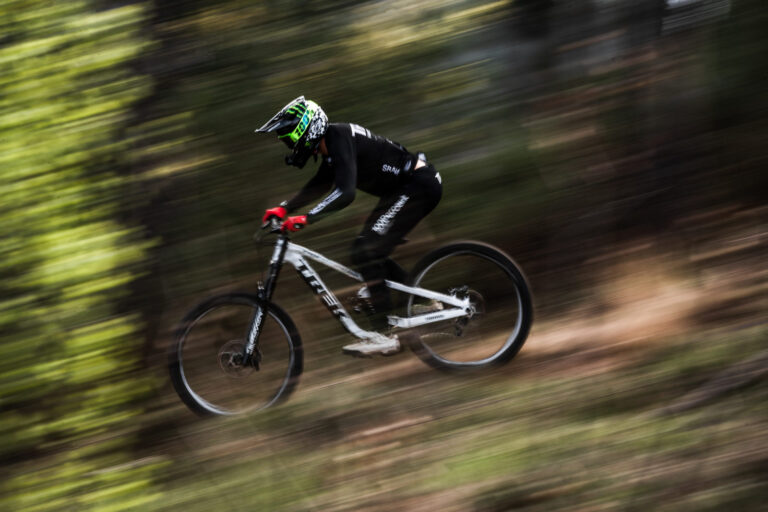Mastering the Elements: Wet Weather Performance of Downhill Bike Tires

Key Point Summary of Wet Weather Performance of Downhill Bike Tires:
- Traction is Paramount: In wet weather, securing maximum traction is crucial for safety and performance on downhill trails.
- Tire Selection Matters: Choosing tires with specific features for wet conditions can make a significant difference.
- Rubber Compound: Softer compounds provide better grip on wet and slippery surfaces.
- Tread Pattern: Deep, wide-spaced knobs help shed mud and maintain grip.
- Tire Pressure: Lower tire pressures can enhance traction in wet conditions by increasing the tire’s contact patch with the ground.
- Maintenance and Care: Regular cleaning and inspection ensure optimal performance and longevity of your tires.
Embarking on downhill trails under the cloak of wet weather demands more than just skill and bravery; it requires equipment that’s up to the task—especially when it comes to tires. Through my years of racing and riding across a multitude of disciplines, I’ve experienced firsthand the pivotal role that downhill bike tires play in navigating the slippery challenges posed by rain-soaked trails.
The Quest for Traction
Traction becomes the holy grail in wet conditions. It’s not just about staying upright; it’s about controlling your descent with confidence. Early in my cycling journey, I learned the hard way that the right tires could make or break a ride in the rain. A slip here or a slide there can be thrilling, but too much unpredictability can quickly turn a fun ride into a treacherous ordeal.

Choosing the Right Tire
Wet weather demands tires that can pierce through the slick surface to find grip where it seems none exists. On one memorable ride, my choice of tires with an aggressive tread pattern and soft rubber compound allowed me to navigate a notoriously slippery descent with surprising ease. That day, my bike felt more like an extension of myself, perfectly synced with the slippery terrain beneath us.
Rubber Compound’s Role
The softer the rubber, the better the grip. This simple rule has guided my tire choices for wet weather riding. Soft rubber compounds conform more easily to irregularities in the trail, providing grip even on wet rocks and roots. However, this comes at the cost of faster wear— a trade-off I’m willing to make for the added safety and control in adverse conditions.
Tread Pattern: The Difference Maker
Deep, wide-spaced knobs are your best friends in the mud. They dig in when other tires would skid across the surface, and they shed mud that would clog and neutralize less aggressive patterns. Riding through a downpour on a trail carpeted with wet leaves and mud, I was thankful for tires that could bite into the ground and keep me moving forward.

Tire Pressure Adjustments
Lowering your tire pressure in wet conditions can vastly improve your bike’s handling and grip. With a slightly softer tire, the contact patch with the ground increases, allowing for better traction. It’s a delicate balance, though; too low, and you risk rim damage or a pinch flat. Finding that sweet spot is key, something I’ve honed over countless wet rides.
Maintenance Is Key
Post-ride maintenance takes on added importance after wet rides. Mud, grit, and water can accelerate wear on your tires, so regular cleaning and inspection are crucial. I make it a habit to carefully check my tires after every wet ride, looking for signs of wear or damage that could compromise their performance next time around.
Wet Weather Performance of Downhill Bike Tires: In Conclusion
Wet weather riding is an art and a science, with tire selection and maintenance playing starring roles. Through trial and error, research, and many muddy rides, I’ve learned that the difference between a good ride and a great ride often comes down to the rubber meets the trail. Whether you’re a beginner venturing into the world of downhill biking or a seasoned rider looking to improve your wet weather game, remember: the right tires can make all the difference.
For wet weather conditions, especially in the context of mountain biking or enduro riding, the Vittoria Martello is an excellent choice from Vittoria’s lineup. Designed to handle a variety of conditions with a focus on versatility and durability, the Martello features a tread pattern that provides reliable traction on wet and slippery surfaces.
Key features of the Vittoria Martello include:
- Aggressive Tread Pattern: The Martello comes with deep, widely spaced knobs that help to efficiently clear mud and maintain grip on wet trails.
- 4C Graphene Compound: Vittoria’s proprietary Graphene 2.0 compound enhances the tire’s ability to balance traction, durability, and rolling efficiency. The use of Graphene allows for a tire that grips well in wet conditions without sacrificing too much in terms of wear and tear.
- Tubeless-Ready: Like many modern mountain bike tires, the Martello is tubeless-ready, allowing for lower air pressures without the risk of pinch flats, further enhancing grip and comfort on rough, wet trails.

This tire is designed to be a good all-rounder, but its features make it particularly adept for wet weather riding, offering the confidence needed to tackle challenging conditions with confidence.
Happy trails!
John
FAQ
Which tyre is best for bike in rainy season?
The Vittoria Martello or Maxxis Shorty are excellent choices for biking in the rainy season, offering great traction in wet conditions.
What should mountain bike tire pressure be in wet conditions?
Typically, lower pressures around 22-28 PSI can improve traction in wet conditions, but this can vary based on rider weight and tire volume.
Does weather affect bike tires?
Yes, weather affects bike tires; temperature changes can alter air pressure within the tire, and wet conditions may require tires with specific tread patterns for optimal grip.
Do MTB tires wear out faster on pavement?
Yes, MTB tires tend to wear out faster on pavement due to their aggressive tread patterns and softer rubber compounds, which are designed for off-road traction rather than hard surfaces.





